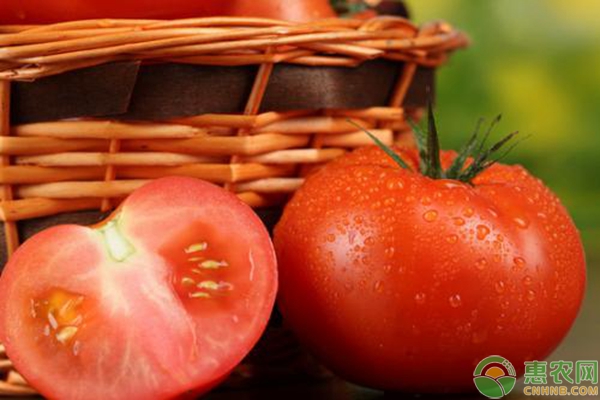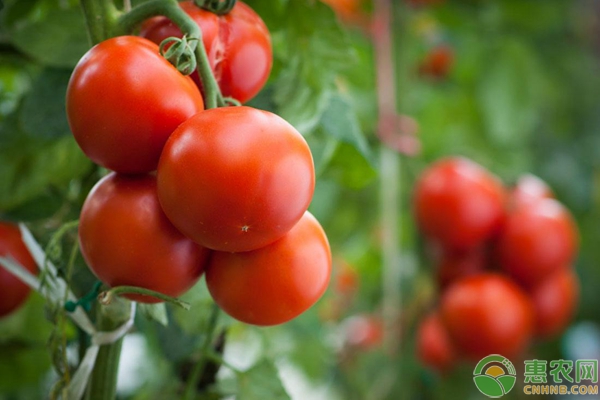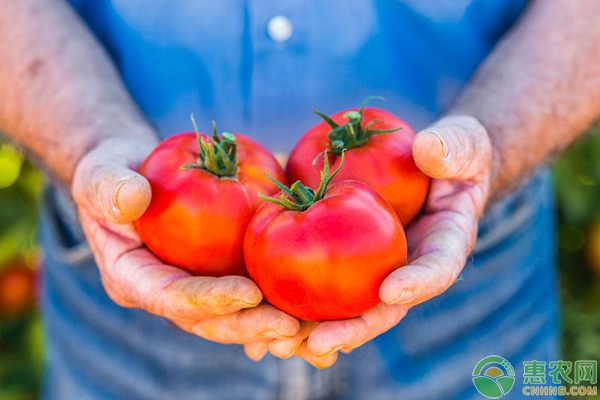Tomatoes are one of the most common vegetable varieties in our lives. They are nutritious and can be eaten directly or cooked. The demand for tomatoes is high, so there are not many people who grow tomatoes. It is autumn, and autumn is the season with the highest incidence of tomato disease. So what are the common diseases of autumn tomatoes? How to prevent it? Let’s take a look. 1. Early blight Characteristics of the disease: early blight damage leaves, round brown lesions appear in the early stage of leaf infection, occasionally damage the stem and fruit, the characteristics of stem and fruit are similar to the leaves, in the case of moisture, many small black spots will appear on the lesion. Prevention and treatment methods: Do a good job in the disinfection of the orchard, remove all the fruits and leaves of the orchard. After the onset, you can use the drugs such as mancozeb or chlorothalonil WP to spray and control. Once a week, it can last for one month. 2, leaf mold Characteristics of the disease: The leaf mold is mainly harmful to the fruit. It will start from the fruit syrup in the early stage of fruit infection. There are concave plaques on the pedicle, and there will be plaques with different shapes on the leaves, causing the leaves to gradually become yellow and die directly at the end. drop. Control method: The prevention and treatment method is similar to that of early blight, and it is necessary to remove the diseased fruit and leaves in time. The orchard is then sterilized and sprayed with a drug such as kelicone WP, which is consistent with early blight. 3, late blight The characteristics of the disease: the damage of late blight is very large for tomatoes, its incidence rate is extremely fast, and the infectivity is extremely strong, mainly on the petiole and stem. Seedling growth has obvious problems and begins to fall, color patches appear on the leaves, mildew spots appear on the plaques in the wet, and the diseased fruit becomes very stiff in the later stages of the disease. Control methods: The late blight is mainly based on prevention. Do a good job of cultivating the soil in the orchard, and regularly disinfect the orchard. Then spray the Phytophthora and other drugs for prevention and treatment, once a week, spray about 4 times. 4, gray mold Incidence characteristics: Gray mold causes damage to the stems and leaves of tomatoes, and green patches appear on the surface of the peel, accompanied by gray mold spots. The plaque is not affected by the veins. In a humid environment, the infection rate is accelerated, and the symptoms of the fruit are similar to those of the leaves. Control method: First of all, we must prevent it when we plant it, use carbendazim WP and other drugs to spray and control the seedlings to eliminate bacteria. When spraying flowers, an appropriate amount of anti-must fungicide can be added to the water for prevention. After the onset, the keeling WP can be used for sterilization. Attachment: High-yield technology for tomato cultivation 1, choose a good species An excellent variety is the basis of high yield. Nowadays, the tomatoes on the market can be said to be dazzling, and there are many varieties, but you will find that the taste of different varieties of tomatoes is different, some will be delicious, and some will look good. Poor taste and other various problems, because different varieties are planted in different regions, the effect is different, so we generally choose according to the specific conditions of the location, for example, in Hunan You can choose drought-resistant and disease-resistant varieties. 2, timely seeding Sowing at the right time is also an important condition for high yield. Because there are more varieties of tomatoes and different climates in different parts of China, the time for planting different varieties and different regions is different, for example, in China. In the northeast and northwestern regions, tomatoes can be planted in two seasons, and can be planted in March and June each year. In North China, it is planted in January and February each year, but in general Regional tomatoes are basically grown in March and August each year, so you can see which area of ​​your country you are in, and then plant them according to scientific time. 3. Reasonable density Basic crops, as well as the output of fruits and herbs, are more or less related to the density of planting, so the tomatoes are the same. We need to manage the density according to the selected variety and the fertility of the planting area. Under normal circumstances Acre land can generally be planted with more than 500 to 600 plants, but if the child suddenly becomes poor, we can increase the amount of planting in an appropriate amount, and reduce the amount of soil fertility under relatively abundant conditions. The distance between each line is generally between 40 and 50 centimeters, and the distance between each plant is about 30 to 40 centimeters, so that the chicken is convenient for later field management, and the tomato plants are also certain. The stretch space makes it easy to carry out photosynthesis. 4, scientific fertilization Tomatoes need to be fertilized several times in the whole growth period except for the base fertilizer. The first time is to apply fertilization after planting. This fertilizer can use urea to promote seedling. When the tomatoes are flowering, we have to fertilize for the second time. This time, we can use potash and phosphate fertilizers, which can play a role in promoting flower opening and fruit preservation. The third fertilization is of course the time when the fruit is fruitized after the tomato fruit. At this time, we can divide the fertilization into multiple times. Because tomatoes can be harvested in batches, a small amount of foliar fertilizer can be sprayed after each harvest, which can achieve the effect of strong fruit and promote fruit ripening. 5, pruning shears Tomatoes grow a lot of side branches during the growth process. Many people think that the side branches will mean that the result rate will be higher. In fact, this is not the case. If the side branches are too much, the nutrients consumed will be larger. Although there are a lot of tomatoes, there are basically few high-quality tomatoes in the end, so we usually trim the extra leaves and leaves them, then only keep the trunk and some side branches, and then the results will be denser. The leaves should also be removed, so that the plants can absorb nutrients and photosynthesis better, and the permeability in the field is better, which can prevent many diseases.
Organic Chlorella Tablets are made from Organic Chlorella Powder. Organic Chlorella pyrenoidosa is an emerald green single-celled freshwater algae that grow naturally in lakes and ponds. It is a portion of a real superfood, and its healthy chlorophyll content is nearly ten times that of similar vegetables such as wheat, barley, and alfalfa. Our organic chlorella tablets contain at least 60% crude protein and are also a complete protein, which means it contains a complete balance of essential amino acids.
100% organically grown broken cell wall chlorella powder
Naturally, detoxify and alkalize the body
Contains 60% absorbable whole Plant Protein
Rich in vitamins (A, C, B1, B2, and B3) and minerals (magnesium, calcium)
Vegan, non-GMO, broken cell, air-dried, gluten-free, 100% organic
Reseal the bag after opening. Store in a cool and dry place, away from direct sunlight.
Chlorella Tablets, Organic Chlorella tablets, chlorella tablets bulk Organicway (xi'an) Food Ingredients Inc. , https://www.organicwayince.com


Ingredients
Benefits
Technical index
Storage